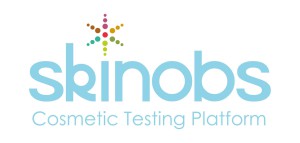ANTI-POLLUTION TESTING TRENDS by Skinobs via HPC
4 July 2017
The era of air pollution started few decades ago and it is unfortunately a major environmental risk to public health in the worldwide megacities. Each week has its new information about peaks of polluted air in Europe, Asia or America. The human activities impact our environment and become a stress factor for the nature preservation and the Human living conditions.
Primary association with respiratory problems have been considered with also well-known impact on the DNA and the skin premature ageing by epigenetic mechanisms mainly.
The pollution has various origins: agriculture, energy production, natural phenomena (volcano eruption, road transport, fuel combustion, methane synthesis… and the list is so long!).
The 1st anti-pollution skin care was launched in1995 by Clarins with a pioneering role of the cosmetics brand. And since 2014 as confirmation of this uncontrolled trend, the anti-pollution skincare product increased by 40% in Asia pacific region.
Nowadays, the major pollution components influencing the good condition of the skin which are studied are the pollutants present in the air. We can also think that water, soil and food pollution can also affect the skin. MyExposome, identified 1400 substances after one week of a normal life pollution exposure.
Environmental Protection Agency (EPA) of the USA classifies pollutants into 5 categories:
- The heavy pollutants, lead
- The fine (10µm) and ultra-fine (2.5 µm) particles
- nitrogen oxides (car exhaust),
- Sulphur oxides (industrial plants),
- ozone (ground level).
Thus, air pollution is composed of two main types of primary pollutants: particulate matter (PM), and gases (O3, CO2, CO, SOx, NOx) which are also named volatile organic compounds (VOC).
Firstly, what are the numerous and various effects of these substances on the skin physiology in the short and long term?
The resulting skin disorders are numerous and mainly caused by the oxidative stress of the pollutants:
- Short term: accumulation of toxins, alteration of the barrier function, decrease of the skin resistance to UV and external agents, proteins lipids and DNA oxidation, modification of the [acid] pH, inflammation, occluding of the pores, dehydration, lack of oxygen, decrease of the cell turnover, depletion of important anti-oxidants, sebum overproduction,
- Long term: wrinkles, age-spots, acne, dull and sagging, sensitivity.
The skin damages could be summed up in few words: Aging (long term effect), Dark spots (long term effect), and Sensitivity (short term effect). Finally, the “anti-pollution” activity of cosmetics to keep the skin pure should have 3 main objectives:
- Skin detox (curative action)
- Rebalance the skin (curative action)
- Protect and isolate the skin (preventive action).
What on human methods are today available to assess the performance of the anti-pollution cosmetics or actives?
To evaluate the “anti-pollution” performances of cosmetics 3 criteria of the protocols could be considered: preventive or curative efficacy, short or long-term action, real life condition or controlled pollution conditions. The following claims can be substantiated with the classical methods and devices for a short or long-term performance: cleansing, detoxifying, purifying, soothing, seboregulator, pH-regulator, soothing, moisturizing, nourishing, anti-UV, anti-age-spot, anti-oxidant, anti-free radical, radiance and skin complexion… Any of these testing methods can be easily retrieve with a free access to the testing platform Skinobs.
Generally, the protocols are conducted on the forearms, on a treated zone and a non-treated zone with standardized conditions of product application, cleansing and drying and a standardized or in situ pollution environment. Depending of the protocol design, each CRO proposes various standardized pollution conditions such as: cigarette smoke, neutral particles, ozone… We may suggest to take care of the ethical principle when testing cosmetics on human.
For a specific “Anti-pollution” claims we have identified the following methods. Before any chemical analysis, specific sample of the skin are implemented: stripping (caution to the potential adhesive interaction), swabs or glass sticks:
Protection performance
- Heavy metal analysis (Lead, Iron Chromium) by Syntivia, Zurko research CIDP.
- particles visualization mimicking PM deposit by Dermscan, Cerco, CIDP.
Anti-oxidant
- Lipidic peroxidation (SQ-OOH, MDA, vitamin E) by Lipotype, Synelvia, CIDP, Proderm, Dermscan.
- Proteins oxidation by Oxiproteomics.
Detoxifying
- Oxygenation Measure of transcutaneous partial pressure of O2 by Cerco and Dermscan
Skin complexion and radiance
- GlossyMeter (C+K), GonioLux (Orion Concept), Samba (Bossa Nova tech), SkinGlossMeter (Delfin), C-Cube (Pixience).
Inflammation
- Colour measurement by spectrophotometry.
- IL-1 dosage.
To finalize this global overview of the anti-pollution claim substantiation, we could discuss whether the future of this testing will be a standardized protocol or not? Indeed, every testing laboratory could give advice about the standardized or modelized conditions, the nature of the pollutants, the ethical considerations. Could the definition of a Pollution Protection Factor be too restrictive for the CRO’s and the cosmetics which need freedom to challenge their innovation and creativity?
How many Apps or website are now available to evaluate the pollution context and advise the consumers about anti-pollution actions and products? These new digital uses combine the ultra-personalization trend with the geo-tracking of the environment conditions and certainly influence the future of the new anti-pollution cosmetics development.
Anne Charpentier
CEO Skinobs
HPC today-May-June2017-Anti-pollution substantiation by Skinobs.jpg








 Follow us on Linkedin!
Follow us on Linkedin!
You must be logged in to post a comment.